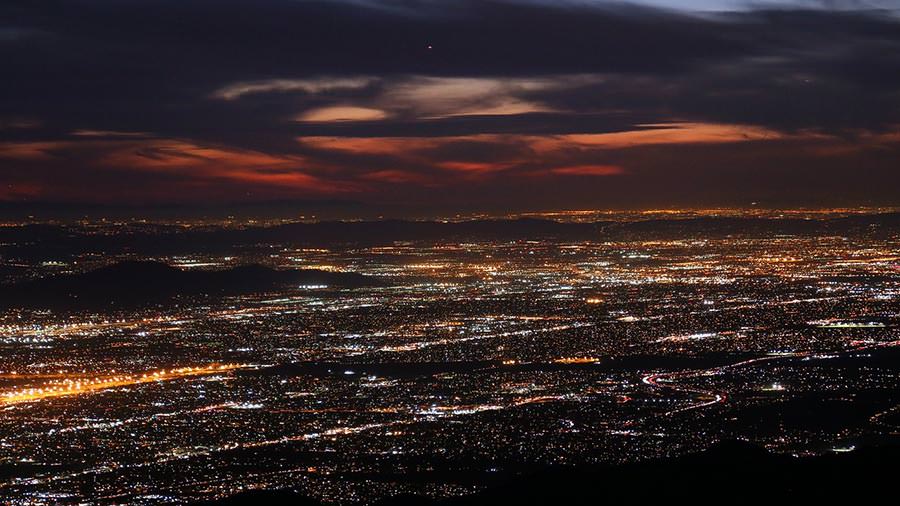Affordable fix-and-flip opportunities are still available in San Bernardino County, one of California’s fastest-growing areas, as well as neighboring Riverside County. These counties offer prices that are a fraction of housing costs in coastal Los Angeles.
The quest for affordable housing is bringing hundreds of first-time home buyers to the San Bernardino and Riverside markets.

The Inland Empire is larger than nine US states and encompasses both commercial centers (Ontario, Rancho Cucamonga, Fontana and Colton) and residential areas (Loma Linda and Chino Hills). Farther east are resort communities like Palm Springs and Palm Desert.
According to ATTOM Data Solutions, the Inland Empire’s four counties – Los Angeles, Orange, Riverside and San Bernardino – posted a combined 11,148 flipped homes in 2016 and represented roughly 6.0 percent of all flipped homes nationwide. Orange County was the costliest place to flip, with median home purchase prices at $465,000. Flips on average took 186 days to complete. Based on median home selling prices of $585,000, investors realized average gross profits of $120,000 from Orange County flips.
Los Angeles County yielded the highest gross profits per flip. Purchase prices averaged $362,121 for Los Angeles County homes and selling prices ranged around $489,000, suggesting gross profits averaging $126,879 from Los Angeles County flips. The typical flip took 193 days to complete.
San Bernardino County had the region’s largest share of flips (7.9 percent of area home sales) and was also the most affordable flip market.
The median purchase price for a San Bernardino County home was $182,750, or roughly one-third the cost of an Orange County home. The median sale price was $260,000, yielding gross profits averaging $77,250 for San Bernardino flip investors. The strength of this housing market was evidenced by flip activity that was down only 1.0 percent year-over-year in San Bernardino County versus 5-6 percent declines in Orange and Los Angeles counties. Flips took 181 days to complete, making San Bernardino County the only one of the four Inland Empire counties where deal times didn’t lengthen in 2016.
In nearby Riverside County, flips accounted for 6.1 percent of home sales. The median purchase price for a Riverside County home was $235,000, somewhat higher than San Bernardino properties, but still well below the $350,000-$450,000 purchase price range for homes in Orange and Los Angeles counties. Riverside selling prices averaged $310,000 and enabled investors to realize gross profits averaging $75,000 on flips. Flips typically took 185 days to complete.
Despite a slight slowdown in activity compared to the prior year, flips remained a key component of the Inland Empire housing market, accounting for 6.0 percent of 2016 home sales. This compares to flips accounting for 5.7 percent of home sales nationwide.
Recently released mid-year 2017 statistics indicate that, despite rising home prices in San Bernardino and Riverside counties, these markets are still bargains for flip investors. The average purchase price for a San Bernardino home was $220,000 in the second quarter of 2017 and the average sale price was $301,000, yielding gross profits averaging $81,000 for flip investors. The median sales price for Riverside County homes was $385,000, up 11 percent from last year, and gross profits from Riverside County flips averaged $80,600. In both counties, gross profits compared very favorably to gross profits averaging $67,516 for all flipped homes nationwide. During this year’s second quarter, flips accounted for 6.7 percent of San Bernardino home sales and 7.6 percent of Riverside home sales versus 5.6 percent of home sales across the US, according to ATTOM Data Solutions.
San Bernardino Neighborhoods
San Bernardino County covers 20,105 square miles and is home to more than two million residents, making it the fifth most populated county in California. The majority of the population resides in areas south of the mountains. San Bernardino’s housing stock is relatively mature with a median home age of 38 years and a median home size of 1,480 square feet.
Hot San Bernardino area neighborhoods for young professionals, according to Rent.com, include Little Creek and Ridgeline. The Little Creek neighborhood is located near the center of the city of San Bernardino. In addition to many popular restaurants and night spots, Little Creek is known for its many tree-lined jogging paths through nearby local parks. The Ridgeline neighborhood is located north of San Bernardino. California State University, San Bernardino is located there and residents have easy access to scenic hiking trails through the nearby mountains.
Riverside Neighborhoods
Riverside County encompasses 7,208 square miles and has a population of nearly 2.2 million, making it the fourth most populated county in California. The area’s affordable housing is attracting large numbers of families from Los Angeles as well as from the San Diego metropolitan area.
Hot Riverside area neighborhoods include Arlington Heights, Canyon Crest, Eastside and University. Victoria Avenue in the Arlington Heights neighborhood is a Riverside city landmark and has many reminders of the area’s citrus-growing history, which are reflected in its colorful street signs and in the names of local cafes and shops.
Canyon Crest is one of the largest Riverside neighborhoods. It borders the Box Spring Mountains and the northern part of Sycamore Canyon Park. Its hilly terrain has shaped this neighborhood’s development and offers scenic vistas of the surrounding area. While Eastside is an older residential neighborhood, much of its historic housing stock has been beautifully maintained by its long-time residents. Eastside shops and restaurants are concentrated along University Avenue.
The University neighborhood is home to the University of California, Riverside, which occupies nearly half of the land area. Families occupy much of the neighborhood’s low density hillside housing and its large student population resides mainly in high density apartments. An added bonus for area residents are the University Agricultural Experimentation Stations, which provides hundreds of acres of undeveloped land near the neighborhood’s center.
